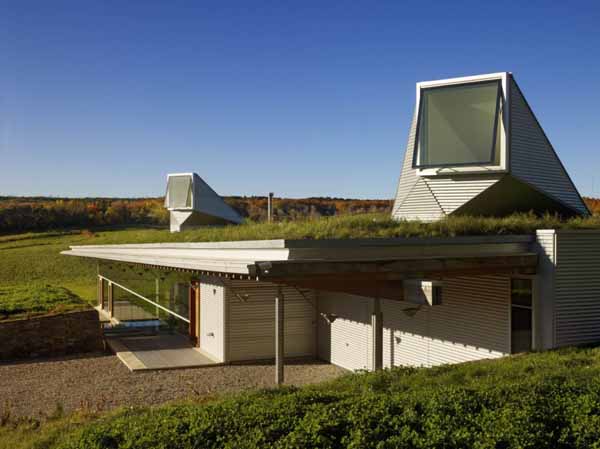
This beautiful home surrounded by rolling meadows is the latest home designed by Ian MacDonald Architect in Caledon, Ontario, Canada. The house is an exercise in minimal intrusion, practically disappearing into the grassy hillside it’s built on. The site is a 90-acre parcel of rolling farmland, located in Caledon, forty-five minutes north-west of Toronto. The agricultural property, natural topography, experiential sequence and an existing barn and stone farmhouse provide a dramatic situation for this new residence for a family of four. Careful siting re-presents this landscape’s rural character and the innate qualities of exposure and containment.
The new house is a non-building, thereby leaving the original farmhouse and barn intact and entirely separate from the house. Careful view-framing and spatial sequencing provide a framework through which one can experience the landscape and agricultural history. The house is located at the end of a long lane, with a modest presence from the road. This distance establishes the appearance of two separate occupancies as viewed from the road and the quiet approach to house ensures that the property’s pastoral presence is preserved.
Various elements structure one’s perception of the place, and its relationship to the original site. A watercourse runs alongside the house to a pond within the landscape, inviting the sounds of running water into the interior. A walking path along the edge of the extended watercourse continues towards the barn, visually and physically linking the new residence to the historic settlement. Nestled within the ground, the house focuses views into the meadow rather than onto it. A continuous flat roof with a generous canopy is planted with the same grasses as the meadow, further integrating the house with its site. Each element – old and new – retains its character and integrity, while establishing a collective sense of place.
The grass-covered rooftop features two periscope-like skylights sticking out.
The exterior facade is wrapped in galvalume steel cladding which is long lasting and effortless to clean. Many of the defining features are intended to make the home self-sufficient. The pitched roof with the drought resistant grass will help to keep the interior cool during the summer months.
The entrance to the home is a wall of granite topped with a mound of clover and climbing hydrangeas. A stepped water feature runs along the length of the home and feeds into the pond system.
Glulam fir rafters define the main living space’s double height-ceiling, and quarter-sawn white oak was used for the flooring.
One of the home’s most graceful elements is an interior footbridge that links the bedroom suites with the main entrance, and sits below one of the periscopic skylights, which serves as a sophisticated way to draw in natural light.
Exposed fir rafters unify the house and are visible throughout the spaces.
Photography copyright by Tom Arban

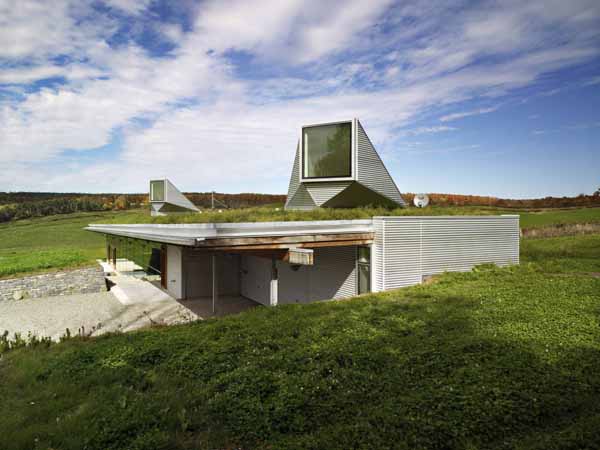
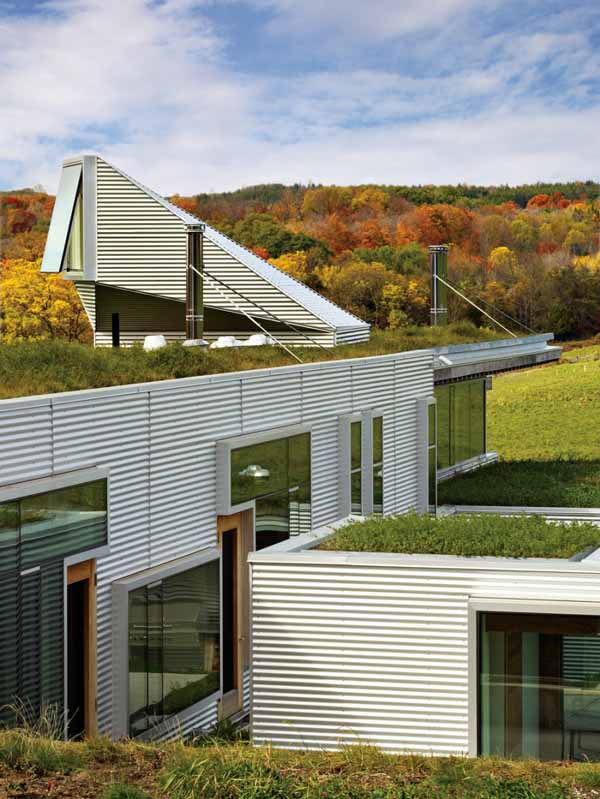
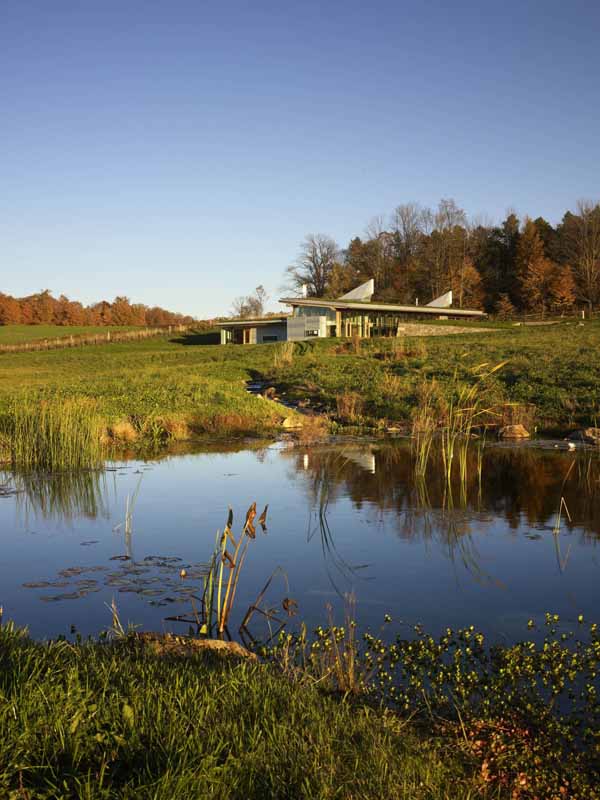
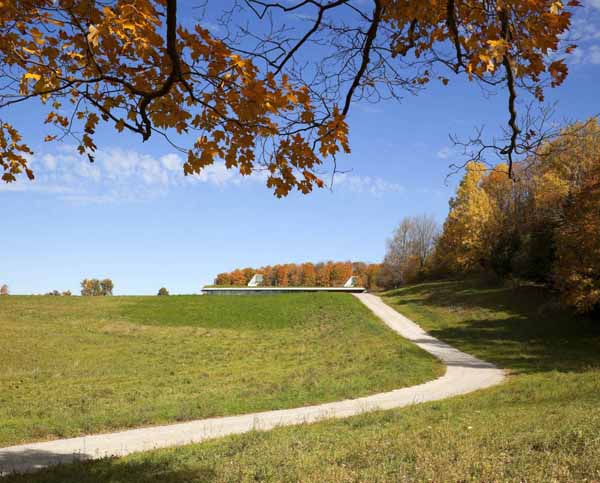
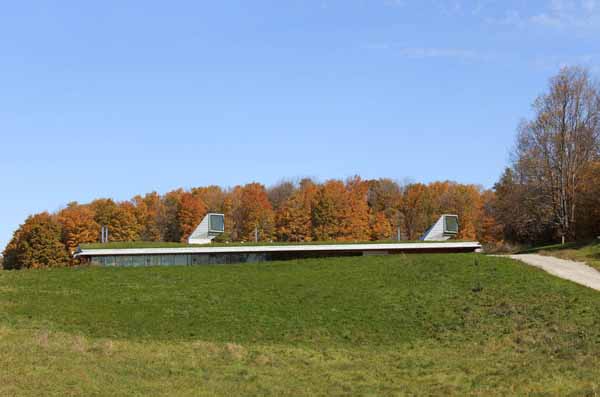
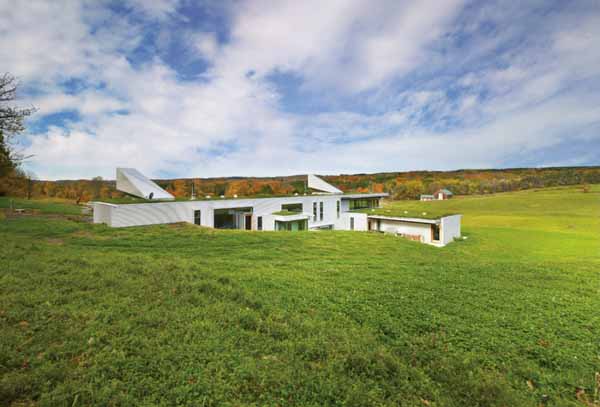
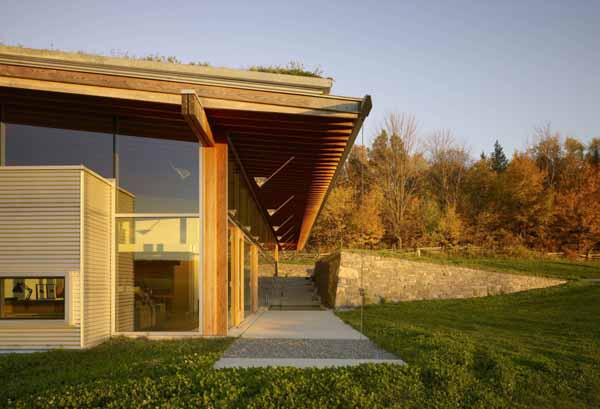
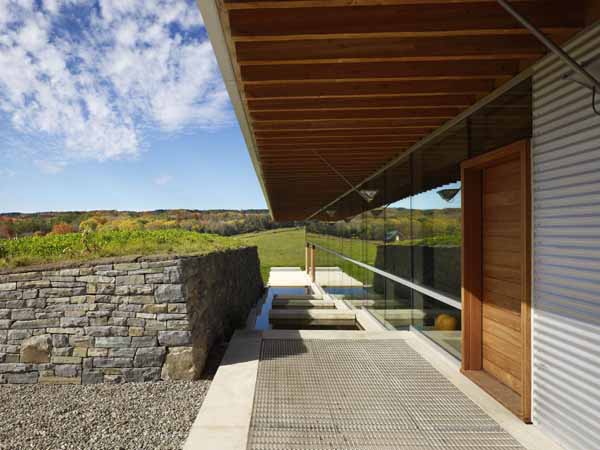
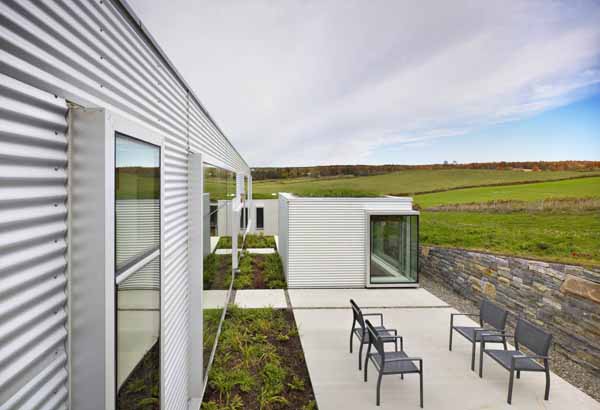
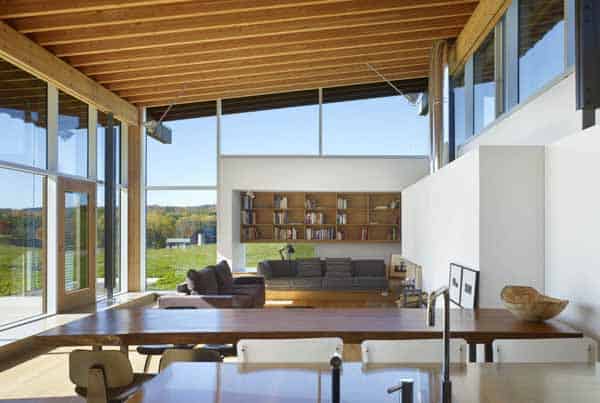
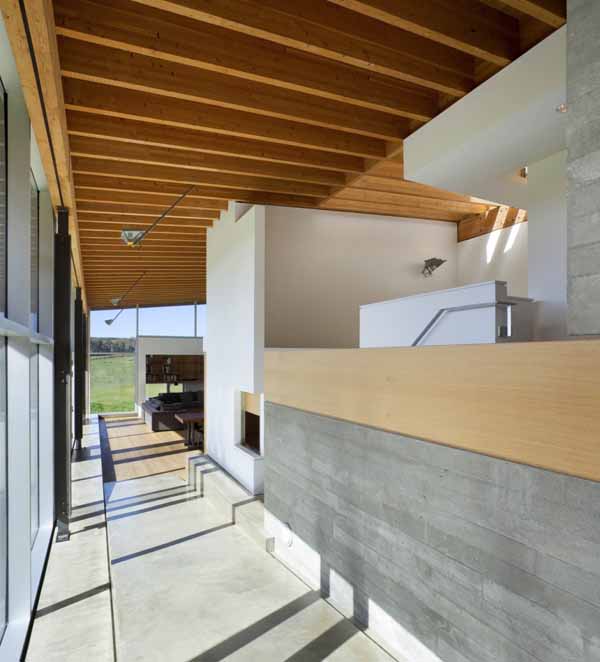
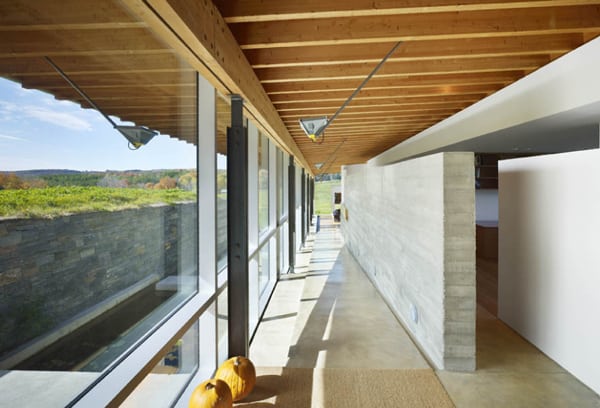
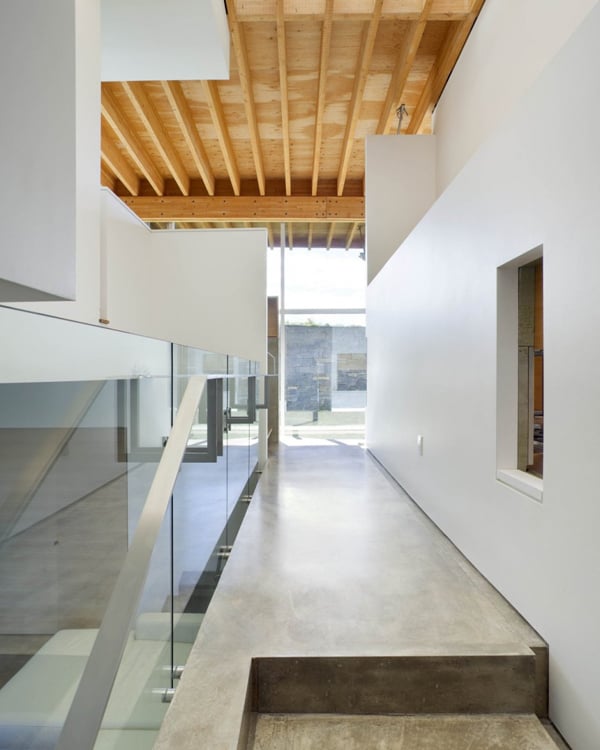

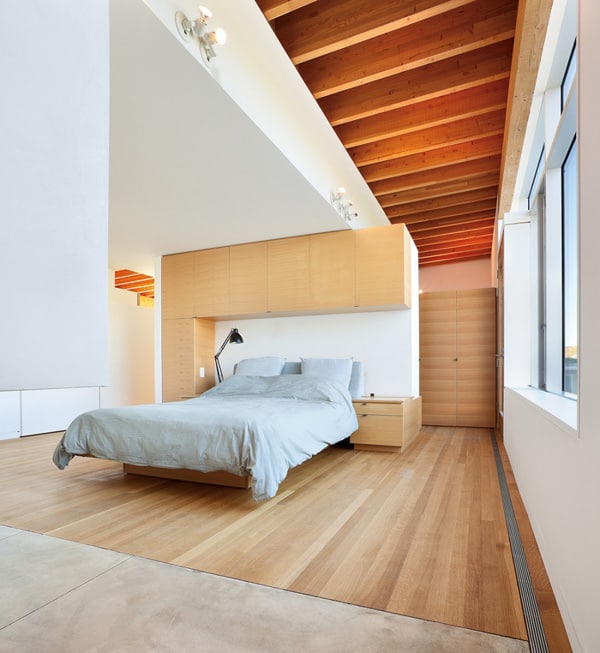
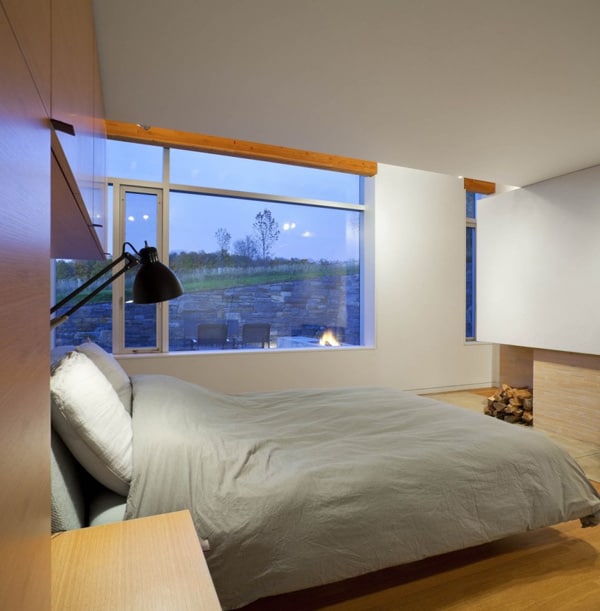
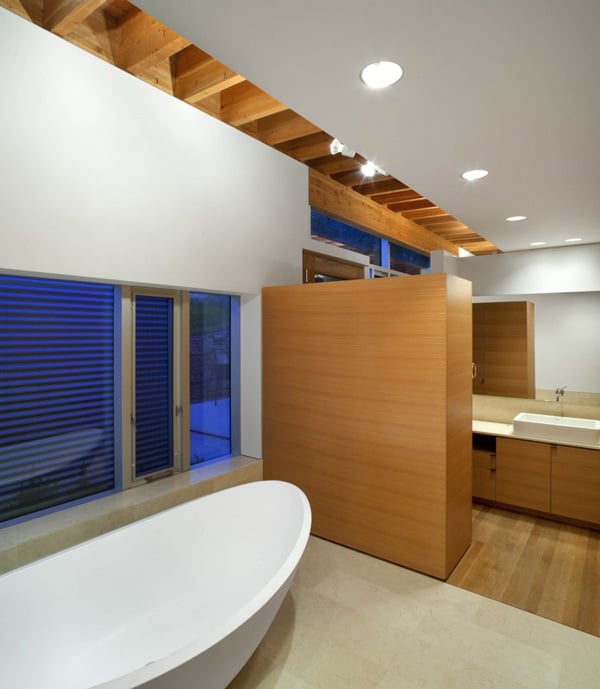
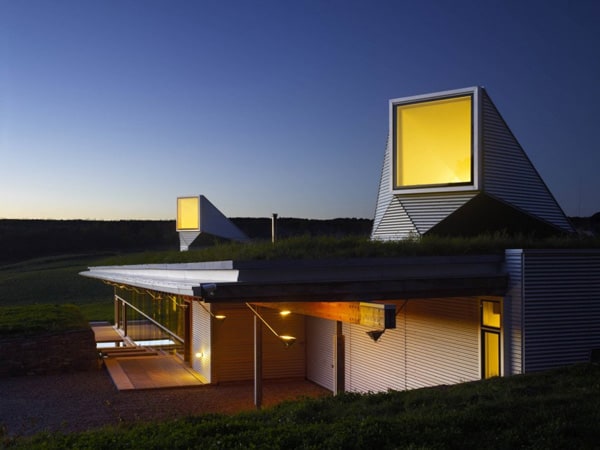
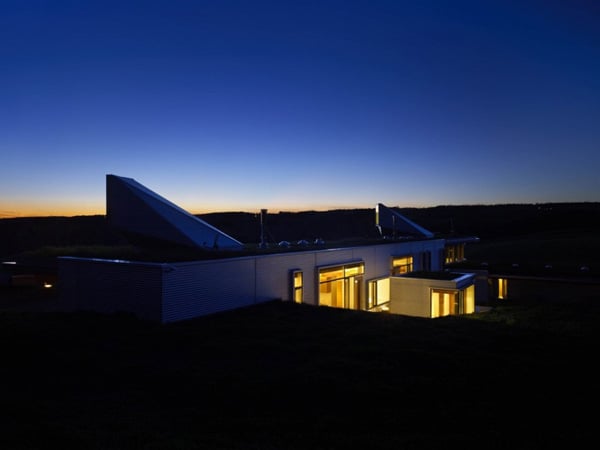
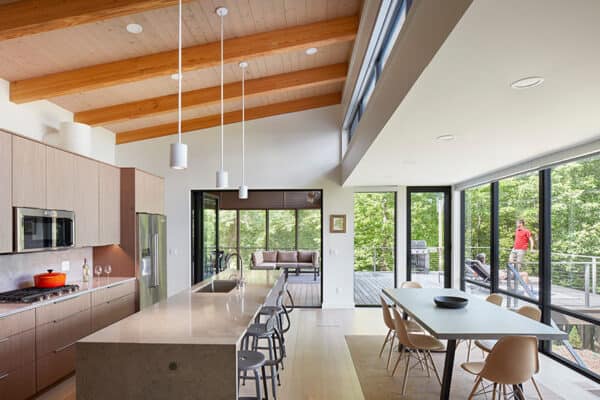
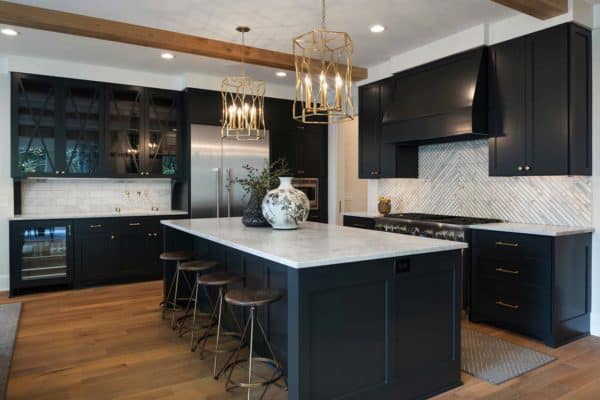
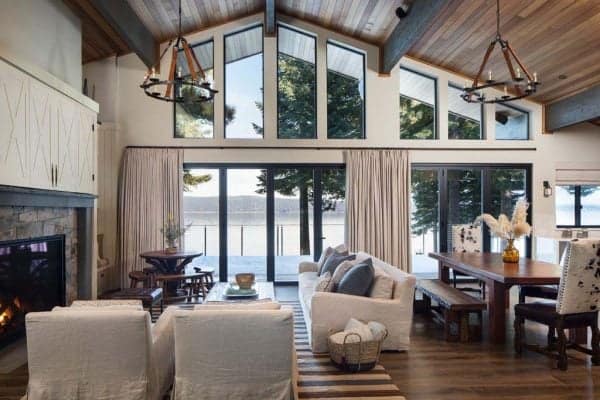
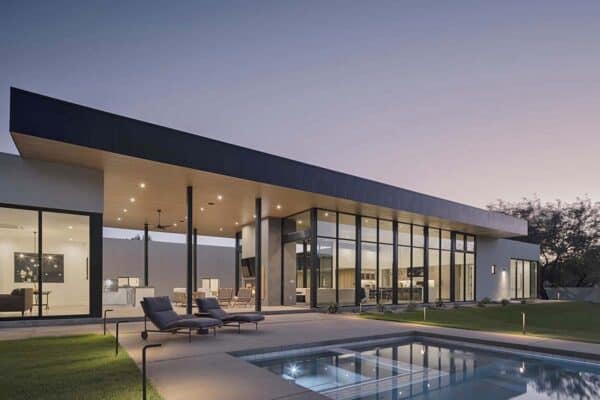
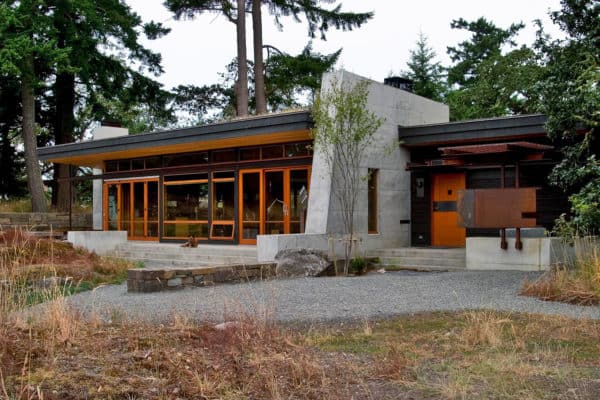

0 comments